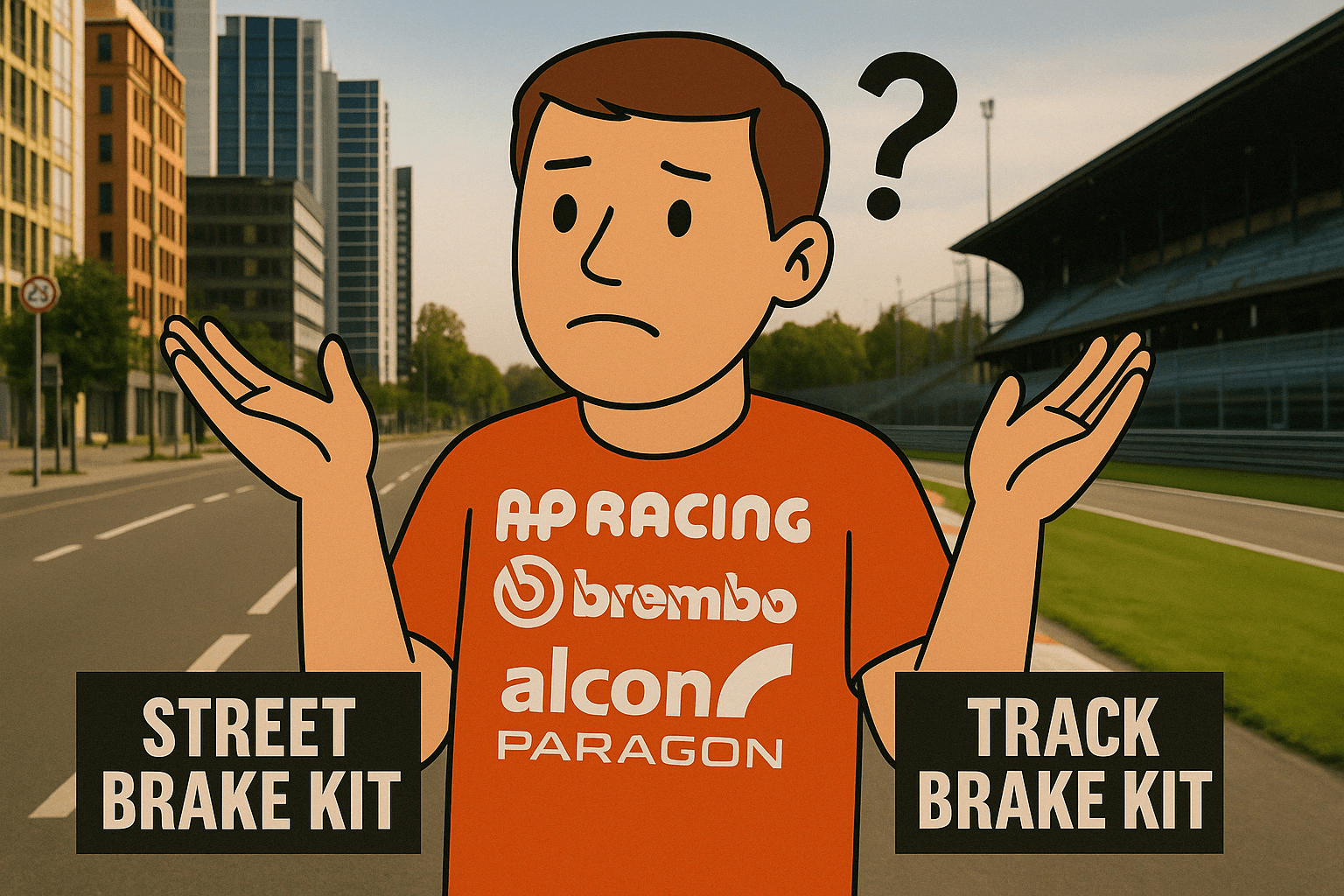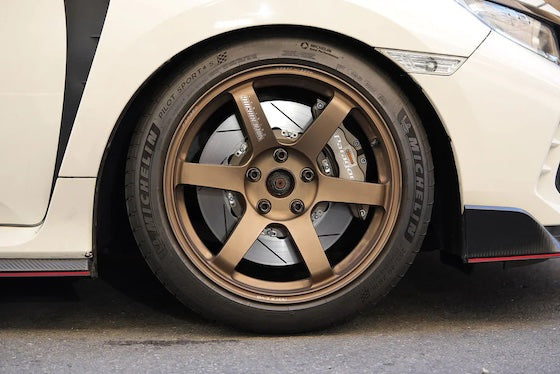Camber Explained: How It Impacts Your Car's Performance
Your car’s suspension does a lot more than just smooth out the bumps. It plays a huge role in how your car handles, feels, and performs—especially when you’re pushing it hard through corners or chasing lap times. One of the most important, but often misunderstood, elements of suspension tuning is camber. In this guide, we’ll explain what camber is, why it’s important, and how to dial it in for both street and track driving.
What is Camber?
Camber is the tilt of your car’s wheels relative to vertical when viewed from the front or rear. It directly affects how your tyres contact the road surface, impacting grip, tyre wear, and handling characteristics.
- Negative Camber: Top of the wheel tilts inward. Increases cornering grip by keeping the tyre flat under body roll.
- Neutral Camber (Zero): Wheel remains perfectly vertical. Ideal for even tyre wear and straight-line stability.
- Positive Camber: Top of the wheel tilts outward. Rarely used in performance applications; mostly seen in off-road or specialised setups.
Performance Benefits of Negative Camber
Negative camber plays a crucial role in performance driving. When you corner, body roll naturally tilts the car, causing the tyres to roll onto their outer edges. Negative camber counteracts this by allowing the tyre to maintain optimal contact with the road.
- Increased lateral grip in corners.
- Sharper turn-in response.
- Essential for fast street and track cars aiming for higher cornering speeds.
Brands like Suspension Secrets and Hardrace offer camber adjustment solutions tailored to both street and motorsport applications.
Trade-Offs of Aggressive Camber
While aggressive negative camber improves cornering, it isn’t without drawbacks:
- Reduced straight-line acceleration and braking performance.
- Uneven tyre wear, especially on the inner edge.
- Increased tramlining and instability on rough roads.
If you daily drive your car, consider milder camber settings to balance performance and comfort.
Camber and Suspension Stiffness Interaction
Stiffness and camber go hand in hand. A stiffer suspension reduces body roll, meaning you may need less static negative camber. Softer suspensions, on the other hand, require more negative camber to compensate for increased roll.
Example:
- A car fitted with Hardrace adjustable arms and a stiff coilover setup may perform optimally with around -2.0° camber.
- A softer daily-driven setup may require -2.5° or more to maintain grip under body roll.
Camber for Track vs. Street
- Track Cars: Prioritise grip and cornering performance. Run aggressive negative camber (often -2.5° to -4° front).
- Street Cars: Balance stability, tyre longevity, and comfort. Stick to milder settings (-1.0° to -2.0° front).
If you enjoy weekend track days, consider a dual setup with adjustable camber plates or arms.
Camber Settings Based on Drivetrain Layout
Front-Wheel Drive (FWD)
- Front tyres handle both steering and power delivery.
- Typically run more negative camber at the front to improve front-end grip and reduce understeer.
- Rear camber is usually less aggressive for stability.
Rear-Wheel Drive (RWD)
- Front tyres focus on steering; rear tyres handle power delivery.
- Front camber improves turn-in and steering response, while rear camber balances traction on corner exit.
- Excessive rear camber reduces straight-line acceleration.
All-Wheel Drive (AWD)
- Power is split between all four wheels.
- Requires balanced camber front and rear to optimise both cornering grip and straight-line traction.
Camber Adjustments for Different Conditions
- Wet or Low Grip Conditions: Less negative camber helps maximise the tyre’s contact patch for better straight-line stability.
- Smooth Track Surfaces: Run more negative camber to maximise cornering grip.
- Bumpy Roads or Tracks: Milder camber and softer suspension help maintain consistent tyre contact.
Tip: Many performance drivers keep a wet-weather alignment in their tuning notebook, especially for unpredictable conditions.
Camber Gain and Suspension Geometry
A good suspension design will dynamically adjust camber during body roll to keep the tyre flat under load. This is known as camber gain.
- Cars with MacPherson struts often require more static negative camber because they don’t gain enough dynamically.
- Vehicles with double-wishbone or multi-link suspensions (common in higher-end sports cars) benefit from better camber gain and need less static camber.
Finding the Balance
Ultimately, the ideal camber setting is a balancing act between cornering performance, tyre wear, and straight-line stability.
If you’re driving your car daily but still enjoy some spirited driving on the weekends, a camber range of -1.5° to -2.0° can strike a great balance between handling performance and tyre longevity. But if you’re building a dedicated track car, don’t be afraid to push beyond -3.0° for maximum grip.
For adjustable solutions, look to trusted brands like Suspension Secrets, Hardrace, Öhlins, and SPL to fine-tune your alignment and achieve the perfect balance for your driving style.
Need Help Tuning Your Setup?
Contact the team at Chicane Australia for expert advice and the best suspension solutions to suit your goals.



